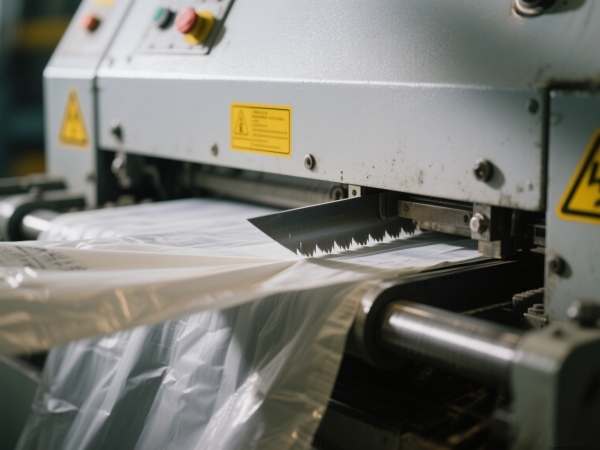As rapid market changes and rising consumer expectations, packaging manufacturers are under pressure to deliver faster, smarter, and more customized solutions. This is where intelligent bag making steps in. Powered by automation, real-time data, and precision control, smart bag machines are transforming traditional production into an agile, on-demand process.
This article explores the core of smart bag making, why customized bag production is gaining traction, the technologies driving it, and what it all means for the future of packaging.

Intelligent bag making refers to the use of advanced automation, sensor technology, digital interfaces, and sometimes cloud connectivity to enable smarter, more responsive bag production. Unlike conventional machines, smart systems are designed to:
1. Auto-adjust parameters like sealing temperature, cutting speed, and film tension
2. Switch between bag types or sizes with minimal manual intervention
3. Collect and analyze real-time data to reduce defects and improve efficiency
4. Integrate with ERP systems for traceability and production tracking
At the core is a PLC (programmable logic controller) coupled with an HMI (human-machine interface), giving operators full visibility and control over the machine’s operation. In some advanced setups, these machines also support remote diagnostics, predictive maintenance, and inline printing systems.
The rise in demand for customized bag production is driven by several key trends across industries. Brands are offering more diverse product lines, which require packaging in different sizes and shapes. Marketing departments increasingly use packaging as a differentiator, with seasonal or personalized designs becoming common. Shorter product cycles and localized regulatory requirements also contribute to the need for more agile packaging systems. In sectors such as food, pharmaceuticals, cosmetics, and e-commerce, the ability to deliver small-batch, made-to-order packaging is no longer a luxury—it’s becoming a competitive necessity.
A number of core technologies enable smart bag machines to meet these demands. Servo motors provide precise control over film feeding and sealing. Auto-adjustment systems make it possible to switch formats without stopping production. Integrated variable data printing allows on-the-fly labeling with elements like QR codes, batch numbers, expiration dates, or personalized graphics. Sensor-driven feedback loops continuously monitor alignment, temperature, and sealing strength to reduce errors and ensure product consistency. Meanwhile, remote access features and cloud-based dashboards allow supervisors to track performance, analyze productivity, and diagnose issues from anywhere.
Smart bag making doesn’t just offer flexibility—it delivers tangible business value. Key advantages include:
Format changes that once took 30–60 minutes can now be done in under 5 minutes.
Real-time monitoring reduces misalignment, overheating, or under-sealing, cutting scrap rates significantly.
With fewer manual adjustments, machines require less skilled intervention.
Automated control systems ensure stable, repeatable outputs across batches.
Operators and managers gain real-time visibility into production rates, defect rates, and maintenance needs.
The same equipment can support startups with limited SKUs or large plants running multiple product lines.
As the market continues to evolve, the shift from standardized, high-volume production to flexible, customer-centric packaging will only accelerate. Smart bag making machines are not just tools; they are enablers of a new manufacturing model—one that supports mass customization, sustainability, and rapid adaptation. For manufacturers aiming to stay ahead of the curve, adopting intelligent bag production is no longer optional. It’s the foundation of a competitive, future-ready packaging strategy.
Whether you’re producing food pouches, medical sachets, or retail packaging, the ability to quickly adapt and deliver high-quality, customized bags could be your next competitive advantage.